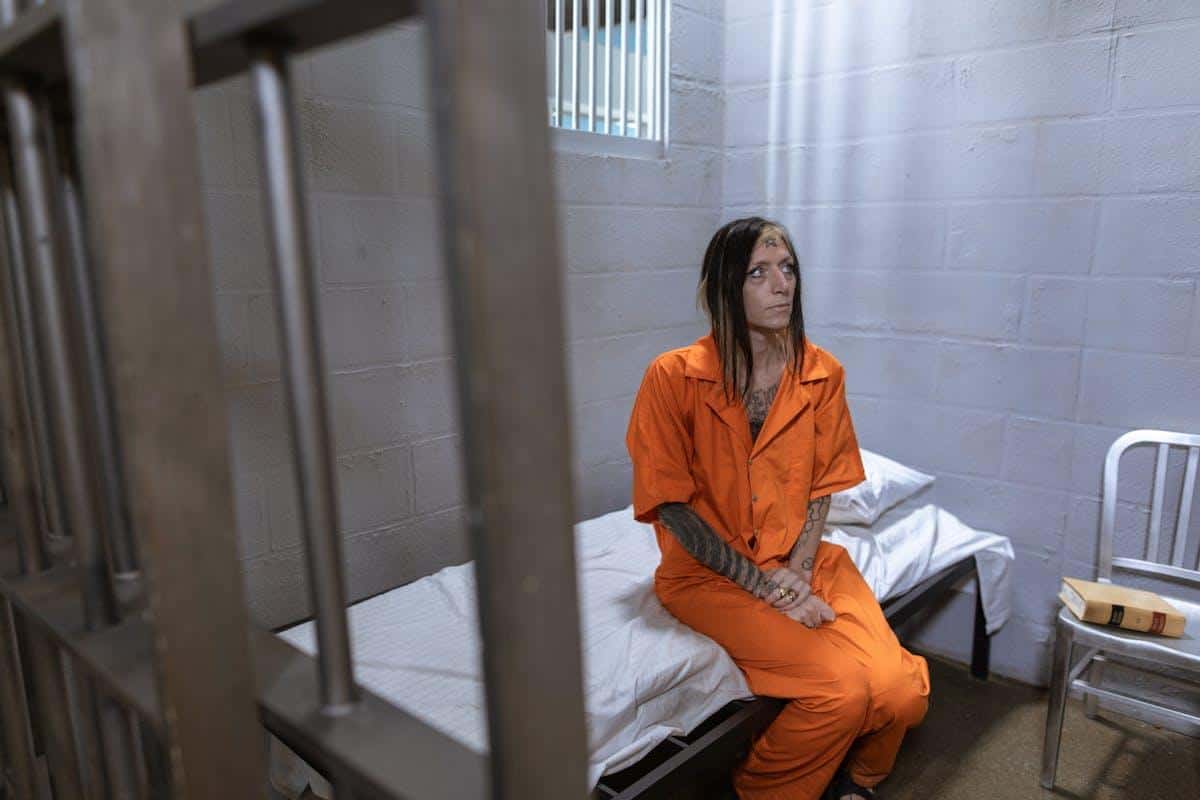Inmate classification in Orange County, California (CA), plays a pivotal role in prison management; it ensures efficient allocation of resources, helps jail facilities maintain security and safety, and aids inmates towards successful rehabilitation. The systematic approach to sorting prisoners based on their background, behavioral traits, medical condition or other parameters is crucial for maintaining the smooth functioning of jail facilities.
A well-defined inmate classification system serves multiple objectives. Primarily, it identifies the risk factor associated with each inmate, determining the requirements for his or her supervision and security level inside the correctional institution. Additionally, it promotes better utilization of resources by enabling officials to assign inmates to programs that suit their individual needs; this could be related to mental health support, substance abuse treatment, educational classes or even vocational training that might assist them after their sentence ends.
This article will explore how inmate classification operates within Orange County CA’s prison system – its features as well as its challenges. Subsequently, we will delve into some significant reforms that have taken place in recent times in an effort to improve this crucial component of corrections administration. We will also investigate the influence exercised by key stakeholders who drove these reforms and ascertain how these changes are impacting both prisoners’ lives and the broader corrections facility management landscape.
Furthermore, we’ll conduct a comparative analysis between the previous system and the reformed one underlining major differences and improvements brought about by these changes. Ultimately reaching out to readers with ways they can engage themselves in ongoing conversations around prison reform and initiatives aimed at improving conditions for inmates.
The Prevailing Inmate Classification System in Orange County, CA
Overview of the Current System
The current inmate classification system in Orange County, CA adopts a risk assessment-based approach. Inmates are classified based on their perceived threat level to the safety and order of the institution, as well as to public safety. Several factors influence this risk assessment including nature and severity of committed crime, previous criminal record, history of violence or behavioral issues, gang affiliations if any, escape attempts, substance abuse issues, among others.
Jails under Orange County’s Sheriff’s Department use an objective system for categorization with various custody levels ranging from minimum to super-maximum. These categories provide insight into appropriate housing assignments and program participation for inmates. The decisions made by the classification officers affect a prisoner’s daily life significantly – influencing everything from work assignments and educational opportunities to recreational activities.
Procedure Under the Prevailing Classification System
Upon admission into correctional facilities within Orange County, inmates undergo an initial intake process during which vital information is collected. This includes personal details, comprehensive crime history, mental health status and also potential threats that they might pose or be subject to within jail premises.
Following this initial assessment is a formalized classification review where thorough analysis ensues. Behavioral evaluation results are combined with collected data elements such as criminal history or gang involvement. The final inmate classification grade defines not only their housing but also privileges like visits or commissary access.
Responsibilities and Roles in Classification System
Classification decisions lie mainly with trained professionals commonly referred to as ‘classification officers’. These skilled personnel are pivotal in maintaining prison security as they determine who goes where within institutions; controlling inmate interactions and minimizing conflicts between prisoners.
They keep track of inmates’ behavior throughout incarceration adjusting classifications when necessary e.g. indications of improved behavior or worsening circumstances could result in reclassification upwards or downwards respectively. They show keen insight in identifying signs like propensity towards violence, likelihood of escape or other potential risks – thus, their decisions and assessments bear a prominent weight in maintaining harmony and safety within prisons.
Challenges Associated With the Current Inmate Classification System
The current inmate classification system in Orange County, California has not been exempt from facing significant challenges. These issues have impeded the effective management of correctional facilities, lead to considerable inefficiencies and inadvertently affected inmates’ welfare negatively. A closer look at these complexities is needed to understand why there was a desperate call for reform in the first place.
Firstly, there are concerns related to overcrowding due to imperfections within the existing classification procedure. Frequently, prisons house more individuals than they were initially designed to accommodate because they host convicts who could be managed efficiently in less secure settings if correctly classified. This miscalculation puts a massive strain on limited resources available within such facilities leading to substandard living conditions that propagate tension amongst inmates placing them as well as staff members at risk.
Secondly, the existent system has been criticized for its lack of personalization. It often fails to incorporate individual characteristics of prisoners including their needs and risks which yields generic categorizations with little consideration for diverse rehabilitation requirements. This broad-brush approach disregards potential threats like an individual’s propensity towards violence or possible benefits like education level affecting their chance at successful reintegration post-release saving both societal resources and costs associated with recidivism.
Furthermore, bias and errors could permeate the assessment process under this system due to reliance on subjective judgment by correctional officers rather than concrete data analytics tools. Misclassification can spur adverse ripple effects through differential treatment and inequitable use of rehabilitative programs resulting in escalating grievances among prisoners commonly presenting itself via disruptive behavior.

In sum, despite its apparent prudence in managing correctional facilities, the prevailing inmate classification system in Orange County bears extensive issues that have made it an unreliable tool for achieving effective prison management while upholding inmate welfare standards.
Insight Into Prominent Reforms in Inmate Classification Orange County, CA
As part of an effort to address issues with overcrowding and improve the overall operation of correctional facilities in Orange County, several significant reforms have been implemented in the inmate classification system. One of such was the introduction of a sophisticated software system, Correctional Offender Management Profiling for Alternative Sanctions (COMPAS).
Designed by Northpointe Institute for Public Management, this software uses artificial intelligence algorithms to predict an inmate’s likelihood of recidivism based on variables such as age, gender, criminal history, and substance abuse history.
Moreover, COMPAS helps determine appropriate levels of security upon imprisonment. In addition to this high-tech system, there’s also been a shift towards evidence-based management. This involves making decisions informed by carefully collected data about what works best when it comes to handling inmates safely and efficiently. The evidence-based approach also calls for continuous monitoring and review mechanism to adjust processes and strategies as needed.
There has also been a push toward re-entry programs that facilitate successful transitions back into society for inmates nearing the end of their sentences. These programs aim at reducing recidivism rates and enhancing public safety by providing inmates with resources like job training, educational opportunities, mental health services, and substance abuse treatments before their release.
Finally, increased adoption of restorative justice practices where victims, offenders, and community members meet to decide how to repair the harm caused by crime has made room for more dialogic forms of conflict resolution within prison walls.
| Reform | Description |
|---|---|
| Adoption of COMPAS Software | Sophisticated AI-Based tool predicting recidivism risk & determining necessary security levels. |
| Evidence-Based Management Approach | Making decisions using collected data showcasing best methods of handling inmates efficiently with review mechanisms for continuous adjustments. |
| Inclusion of Re-entry Programs | Programs facilitating successful societal transitions for inmates nearing their sentences end, aimed at reducing recidivism and enhancing public safety. |
| Adoption of Restorative Justice Practices | Enhanced dialogic forms of conflict resolution involving victims, offenders, and community members to determine ways to repair harm caused by crime. |
Spotlight
Undoubtedly, the reforms in not just the inmate classification system, but also the overall prison management in Orange County, CA are the result of a collaborative effort by various stakeholders. These include government officials and agencies, non-profit organizations focusing on prisoner rehabilitation, legal consultants and activists advocating for inmates’ rights.
Particular mention should be made of the Orange County Sheriff’s Department (OCSD). The department has made concerted efforts to revise and enhance its inmate classification system with input from other integral parties like law enforcement professionals, community advocates and experienced penologists.
For instance, their new Information Management System (IMS) uses advanced algorithms to assess offenders on various parameters such as criminal history and behavior patterns. It is evident that OCSD has been leading the way in making revisions and implementing innovations aimed at improving inmate welfare.
Non-profit organizations have also had a significant impact on these reforms. Groups like Californians United for a Responsible Budget (CURB) played a key role in lobbying for policy changes that led to these amendments in Orange County’s incarceration system. Law firms dedicated to protecting prisoners’ rights have also contributed prominently. They provide much-needed legal help, represent aggrieved inmates and continually push for legislative changes geared towards ensuring fair treatment of inmates.
| Stakeholders | Contribution |
|---|---|
| Orange County Sheriff’s Department (OCSD) | Incorporation of new technology such as IMS which uses advanced algorithms for assessing offenders. |
| CURB: | Lobbying for policy changes leading to reforms. |
| Law Firms defending prisoners’ rights | Legal representation, advocacy for legislative changes aimed at fair treatment of inmates. |
These bodies carry the torch for reform, continuing to advocate for better prison management in Orange County. These important stakeholders bring relentless dedication and innovation enabling the on-going evolution of the inmate classification system. Their collaboration continues to shed light on areas that need improvement, fueling a cycle of continuous optimization geared towards successful reintegration of inmates back into society.
Exploring the Impact of Reforms on Prisoners & Correctional Facility Management
The implementation of inmate classification reforms in Orange County, CA, have resulted in noteworthy changes for both the prisoners and correctional facility management. The new system primarily focuses on making prisons safer, providing avenues to better rehabilitation methods, and offering a more rationalized approach towards managing limited resources.
From the perspective of the prisoners, transparency has greatly improved. The inmates are now privy to the factors that determine their classification and how these directly influence their incarceration experience. Examples of these clinical factors include:
- Criminal history: Past convictions and behaviors come into play.
- Risk assessment: Based on mental health screenings and risk of violence.
- Age and health condition: Younger inmates or those with medical conditions might require different treatment than others.
Inmates may now modify certain aspects under their control such as behavior inside the prison to improve their classification status, thereby empowering them to a degree.

For correctional facility management, it’s been almost revolutionary. Earlier systems often led to overcrowding in maximum-security facilities due to an unnecessary high-risk label for many inmates. The new model has solved this issue substantially by introducing dynamic security levels based on behavioral conduct which helps authorities manage the population in a balanced manner.
Not only does this help optimize space usage but also makes staff allocation more efficient. For instance:
- Inmates who find themselves in higher security due to violent tendencies can receive specialized attention from stronger staff members well-equipped at handling such cases.
- Similarly, aged or sickly inmates will benefit more from healthcare workers than any other staff type.
This personalized approach has tremendously simplified tasks previously challenging – such as staffing plans and resource distribution – rendering prison management easier by leaps and bounds.
The effects of these reforms are far-reaching indeed; they manage to strike a balance between maintaining order even amidst diverse prison populations while simultaneously addressing aspirations towards prisoner rehabilitation and reduction of recidivism.
A Comparative Analysis
The Old Inmate Classification System
Before the reforms, the classification process was primarily based on an inmate’s criminal record, current charges, and behavior within the prison system. Overcrowding was a severe issue as inmates were categorized narrowly into maximum security or minimum security with very few distinctions in between. This narrow categorization often led to mismatched inmates housed together, resulting in increased instances of violence within the facilities.
The previous system also had its challenges as it didn’t adequately consider the individual needs of different inmates, such as those with mental health issues or nonviolent first-time offenders. This lack of consideration often made prison rehabilitation an uphill task since these individuals’ unique circumstances weren’t accounted for during classification.
Prominent Reforms in Inmate Classification
Reforms introduced a more nuanced classification strategy that takes into account various elements in addition to traditional considerations such as crime severity and behavioral history. The reformed inmate classification scheme now factors aspects like an offender’s age, mental health status, and propensity for violence while classifying inmates into broader categories – minimum, medium, maximum security.
In particular, attention has been given to accommodate vulnerable populations like mentally ill and geriatric prisoners with special housing units. A significant innovation is risk-based classifications which involves assessing each inmate’s likelihood of posing harm to themselves or others leading towards more personalized handling by prison staff.
Improvements Post-Reform Implementation
Implementing the new inmate classification system resulted in substantial improvements related to maintaining order within correctional facilities in Orange County. The differentiated approach offers more accurate placements for inmates which has consequentially lowered intraprison violence and improved prison culture.
Moreover, recognizing and accommodating inmates’ unique needs have significantly aided their rehabilitation efforts. Providing resources specific to their requirements has helped improve their mental and physical wellbeing while improving their chances for successful reintegration post-incarceration.
Lastly, by alleviating the overcrowding issue, better housing inmates according to their needs and reassessing the safety and risk factors regularly, results in improved safety conditions for both inmates and staff. These changes denote steps forward in humanizing inmate treatment while ensuring the integrity of correctional institutions.
Conclusion
Despite the significant strides that have been made in reforming the inmate classification system, there is still plenty of room left for improvement and refinement. The Orange County Department of Corrections is continually fine-tuning this system to ensure it remains dynamic, equitable, and capable of addressing the ever-evolving needs of the prisoner population.
With a more comprehensive understanding of individual inmates’ risk factors and needs, it sets its sights on refining processes to consider these nuances better. Future prospects point towards an increased focus on data-driven approaches.
These refined process aims to take into account individual behavioral characteristics, mental health conditions, past criminal history among other factors when classifying inmates. This would entail:
- Adopting intelligent data analysis strategies.
- Incorporating effective inmate behavior management strategies.
- Drawing upon relevant psychological and sociological research.
This sophisticated approach prevents the improper grouping of less risky inmates with those presenting higher safety risks – a situation that could lead to negative outcomes such as intensified gang activity or violent incidents.
Furthermore, plans are underway for enhanced collaboration between various stakeholders in prison reform. This includes liaising further with organizations dedicated to human rights advocacy, mental health experts, academic researchers and criminologists who have invaluable insights into effective prison management approaches. By fostering such collaborations:
- It brings in more ideas from different perspectives about improving inmate classification.
- Pulls together resources from various sectors.
- Encourages policy changes based on well-rounded research findings.
With a society increasingly focused on nurturing rehabilitation over punishment alone, future reforms are expected to reflect this perspective more apparent than ever before in Orange County’s prisons. It is expected that with sustained momentum in implementing these reforms will result in a correctional facility environment where inmates are classified justly and treated fairly irrespective of their backgrounds while maintaining optimum safety levels for staff members and inmates alike.

Call to Action
As we wind up our exploration of reforms in inmate classification in Orange County, CA, it’s important to acknowledge that any and all transformations start with clear awareness and active participation. The journey towards a more rehabilitative and less punitive correctional system is long and strenuous but heavily leans on collective effort by both citizens and policymakers.
The role of the general public can’t be understated when it comes to driving meaningful reforms in areas like inmate classification. As residents of Orange County, your participation in the ongoing dialogue about prison reform can create significant impact.
This involves staying informed about the latest reforms, understanding their implications, contributing to discussions actively, or supporting organizations devoted to this cause. By lending your voice or resources to these discourse forums, you essentially join forces with those pushing for more humane prison systems.
Additionally, there exist numerous organizations dedicated to improving conditions for inmates and facilitating their successful reintegration into society post-incarceration. Many of these organizations welcome support in various forms – be it through volunteering time or donations; every contribution matters.
Remember that changes in systems such as inmate classification significantly affect real people’s lives; involvement in this sphere offers an opportunity to help reshape individuals’ futures positively. In conclusion, every stride gets us closer to a world where correctional facilities serve not just as punitive dens but centers for true correction and restoration-a goal that behooves us all.
Frequently Asked Questions
What Are the Levels of Inmate Classification in California?
The California Department of Corrections and Rehabilitation (CDCR) uses a classification system to determine where an inmate will be housed and the level of security necessary based on their situation. An individual’s custody designation is among four levels – minimum, low medium, high medium, and maximum-security levels. Inmates classified in the minimum category exhibit good behavior and are less likely to escape.
Low-medium inmates are considered slightly more risky and typically committed a non-violent crime, while High-medium inmates usually have higher security needs for they can show signs of aggressive or disruptive behavior. Maximum-security inmates pose a significant risk to staff members and other inmates due to their violent tendency hence necessitating very close supervision.
How Do I Check the Status of an Inmate in Orange County?
To check the status of an inmate in Orange County, California, you can use the online inmate lookup tool provided by the Orange County Sheriff’s Office. Simply go to the website, click on “Inmate Information,” then input either the person’s name or booking number.
You may also call the jail directly; however, certain confidentiality rules may limit what information can be disclosed over the phone.
What Are the Four Levels of Classification for Prisons?
Prisons generally use a four-level classification system: minimum-, low-, medium- and maximum-security levels. Minimum security is for inmates who have shown good behavior or who have committed less severe crimes, perhaps even non-violent offenders serving shorter sentences.
Low Security prisons hold inmates that could require some supervision but not constant monitoring as in Minimum security or High-Medium class prisons; these prisoners are also generally serving relatively short sentences for non-violent crimes or those nearing parole or release dates after serving longer terms for more serious infractions at higher-level facilities initially. Medium Secured prisons host individuals who may have histories involving violence or escape attempts; they might require more rigorous oversight than those held under low security but less than that required at a maximum prison facility level where constant surveillance is mandatory.
Which Inmates Would Be Classified Under Administrative Segregation?
Administrative segregation is used for prisoners who are considered a risk to the safety and security of the prison population or staff. This includes inmates involved in gang activities, those who have attempted to escape or cause harm to themselves or others, or prisoners involved in serious rule infractions.
Inmates placed under administrative segregation will be held in separate areas away from general population and could be subject to disciplinary measures.
What Is a Level 4 Inmate California?
A level 4 inmate in California is housed within maximum-security prisons which are facilities designed for inmates serving long sentences for violent crimes like murder, rape, or armed robbery. The CDCR assigns this classification on the basis of safety concerns either due to the severity of their crime(s), tendency towards violent behavior (including repeatedly causing harm inside a prison), gang affiliations, among other things.
Here inmates require highest levels of supervision and security measures are stringent with control paramount at all times.
What Does B Block Mean in Jail?
“B Block” refers to a specific area within a jail facility where inmates are housed. In many facilities, housing units are designated by letters such as “A”, “B”, “C”, etc., each containing individual cells where inmates reside during their incarceration period.
The conditions and type of offenders housed can vary greatly from one block to another since it depends upon various factors such as security level required, individual behaviors and custody classifications of those imprisoned.
What Does AOJ Mean in Jail?
In a correctional setting, AOJ stands for Arresting Officer’s Justification which pertains to the reasons an officer provides explaining why they believed an arrest was necessary based on their perception of laws being violated at time that action was taken by them.
What Does Triple CMS Mean?
Triple CMS refers to Correctional Managed Health Care (CMHC) model in California state prisons designed to provide high-quality healthcare services to incarcerated individuals with enhanced mental health needs or medical conditions requiring regular care and oversight; however I would caution that real definition might need context clarity depending on an individual situation’s specific nuances plus regional variances internal terminologies could also exist.
